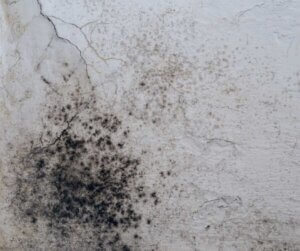When it comes to mould cleaning, it is critical to approach the work with understanding and caution. While mould cleaning is essential for a healthy living environment, certain typical blunders can interrupt your efforts and possibly worsen the situation. In this comprehensive tutorial, we will highlight the most common mistakes individuals make when mould cleaning and present practical tips to avoid them. Understanding these blunders and using the proper approaches will allow you to efficiently clear mould while protecting your health and preventing future infestations.
One of the most common errors people make while mould cleaning is failing to wear proper personal protection equipment (PPE). Mould spores can be dangerous if inhaled or come into touch with your skin or eyes. To reduce your exposure to mould spores, always wear gloves, a mask or respirator, and protective eyewear. Wearing PPE protects you from potential health concerns linked with mould exposure and reduces the likelihood of mould spreading to other areas of your house.
Failure to contain the mould-infested area correctly during mould cleaning might result in cross-contamination and the spread of mould spores. Mould spores can quickly disperse and settle in other sections of your home without containment, producing fresh development. To prevent making this error, use plastic sheets to shut off the afflicted area, air purifiers with HEPA filters, and produce negative pressure by opening windows and doors. This containment approach helps to keep mould spores out of uncontaminated regions.
Inadequate ventilation during mould cleaning can lead to the formation of mould spores. Moisture and dampness can linger without appropriate airflow, creating an ideal habitat for mould to develop. To promote air circulation and speed up the drying process, open windows and use fans or dehumidifiers. Adequate ventilation not only removes excess moisture but also lowers the likelihood of mould renewal.
Choosing the incorrect cleaning solutions is a typical error that might hinder your mould cleaning attempts. While bleach is frequently used as a first choice, it is not always the best choice. Bleach may be useful on non-porous surfaces, but it is ineffective on porous materials and due to its water content, may lead to mould formation on these surfaces. Choose mould-specific cleaners or natural options such as vinegar or hydrogen peroxide instead. These mould cleaning methods are both effective and safe for you and the environment.
It is critical to thoroughly dry the mould-infested area after cleaning it. Leaving damp or moist surfaces produces an excellent setting for mould regrowth. To properly dry the space, use fans, dehumidifiers, or natural airflow. Pay close attention to concealed or difficult-to-reach spots since moisture can become trapped and lead to future mould problems. Proper drying decreases the likelihood of mould returning.
It is a serious mistake to fail to identify and solve the underlying conditions that triggered the mould growth. Mould flourishes in moist conditions, therefore identifying and repairing the source of moisture is critical. Whether it’s a leaking pipe, insufficient ventilation, or high humidity levels, addressing the underlying cause is critical to preventing mould from reoccurring.
By being aware of the frequent mould cleaning mistakes to avoid, you may ensure a more effective and efficient mould cleaning operation. Always prioritise your safety during the cleaning procedure by wearing suitable PPE, containing the contaminated area, and ensuring proper ventilation. Choosing the correct cleaning chemicals and completely drying the area are other important stages in preventing mould regrowth. Mould can be considerably reduced by utilising mould-specific cleaners or natural alternatives and ensuring proper drying.
Furthermore, the underlying causes that led to the need for mould cleaning must be addressed. To prevent recurrent infestations, it is critical to identify and repair the source of moisture, such as leaks or poor ventilation.
Remember that mould cleaning is a continuous procedure, not a one-time event. Regular inspections, immediate attention to any water damage or leaks, and good ventilation and moisture control are critical for preventing mould growth in the long run. Put your health first and take the essential procedures to keep yourself safe when mould cleaning. You can obtain a mould-free environment and a healthier living space by educating yourself on common mistakes to avoid and following the proper tactics.
Professional mould cleaning specialists should be contacted when there is visible mould growth in your home or building, especially if it covers an area larger than 10 square feet. Additionally, if you notice a musty odour, experience persistent moisture problems, or have had water damage in the past, it is advisable to seek professional help. Mould can pose serious health risks and can spread rapidly if not addressed properly. Professionals have the expertise and equipment to safely identify and remove mould, as well as address the underlying moisture issues to prevent future growth. Promptly contacting professional mould cleaning services ensures a thorough and effective resolution to the problem.
AllAces Cleaning & Restoration has over 30 years of experience in the industry, specialising in mould removal. Our advanced technology and equipment, and expert technicians can provide guaranteed results and return your property to a pre-loss condition. At AllAces, we offer an extensive inspection and report package to find the root cause of the moisture and the solution best targeted for your situation.

Why is mould dangerous?
Mould is dangerous because it produces allergens, irritants, and sometimes toxic substances that can cause respiratory problems, allergic reactions, and other health issues, especially in people with weakened immune systems.
Why does mould grow in homes?
Mould grows in homes due to excess moisture, poor ventilation, and warm temperatures. Common sources of moisture include water leaks, high humidity, and condensation. Without proper remediation, mould can spread and cause health problems.
What types of moulds are dangerous?
Stachybotrys, Aspergillus, and Penicillium are some of the types of mould that can produce toxic substances and cause health problems. However, any type of mould can be harmful to some people, especially those with allergies or weakened immune systems.